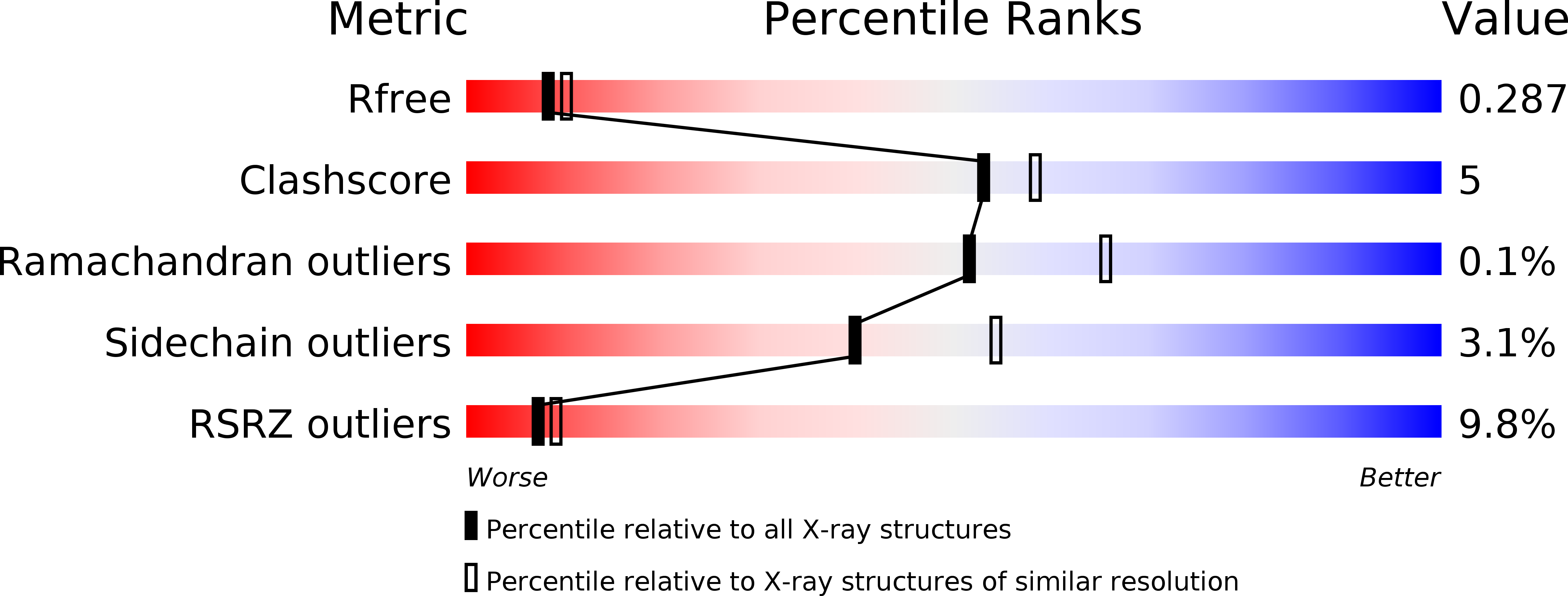
Deposition Date
2013-07-29
Release Date
2013-11-20
Last Version Date
2024-02-28
Entry Detail
PDB ID:
4LWZ
Keywords:
Title:
Crystal structure of Myo5b globular tail domain in complex with inactive Rab11a
Biological Source:
Source Organism:
Homo sapiens (Taxon ID: 9606)
Host Organism:
Method Details:
Experimental Method:
Resolution:
2.55 Å
R-Value Free:
0.29
R-Value Work:
0.23
R-Value Observed:
0.23
Space Group:
P 21 21 21


